MJ Adventure Team Goes to MD - Day 7 - Ponies!
It's been almost a month since we started embarked on this trip so I guess I've had extended enjoyment while organizing photos and thinking about the blog posts. I don't know how many people really read my posts, but there have been some who have asked "what about the ponies?" Day 6 was spent learning about Fort McHenry and exploring Harriet Tubman Underground Railroad. We spent a comfortable night at our AirB&B in Berlin and got on the road in time to get to the Assateague Island National Seashore... 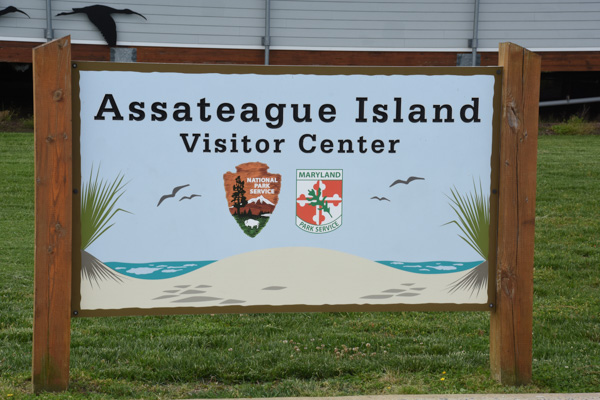
...when the Visitor Center opened. The area is managed jointly by the National Park Service and Maryland Park Service.
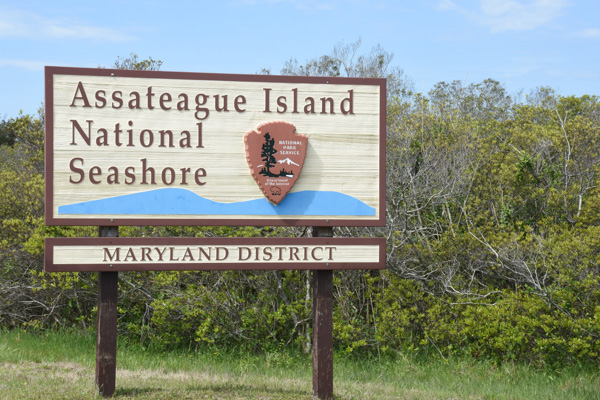
Assateague Island is a barrier island that is 37 miles long and separated from the mainland by Chincoteague Bay and Sinepuxent Bay. The northern two thirds is in Maryland and the southern one third is part of Virginia. If you were a horse-crazy girl once then what you know about these islands is that there are wild ponies living there, made famous by Marguerite Henry's book, Misty of Chincoteague. We had come to find the ponies.
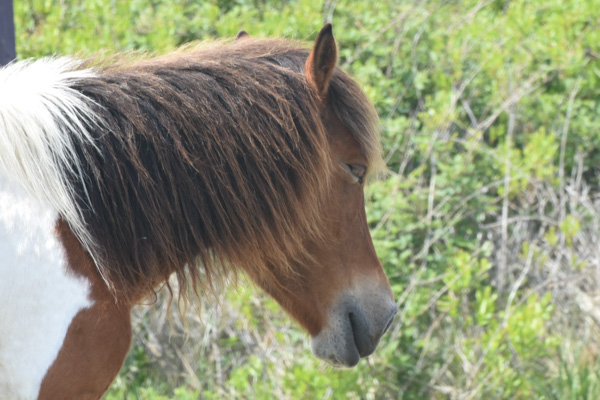
Only part of the island is accessible on a paved road that connects campgrounds and trails. We hadn't gone far when we found them. Ponies!
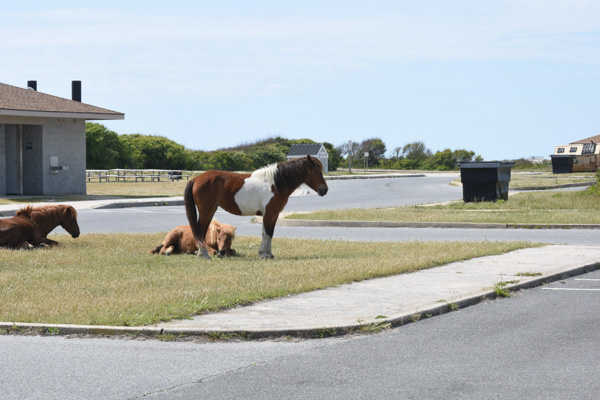
Just pretend that you don't know that they were in a parking lot near the bathrooms. Signs everywhere warn people to leave the ponies alone and don't offer food. It's the same kind of warnings that you read in Yellowstone about not feeding bears and packing food away. People are kicked and bitten by ponies and the ponies are hit by cars when they get used to people offering food.
These ponies didn't seem to be going anywhere soon...
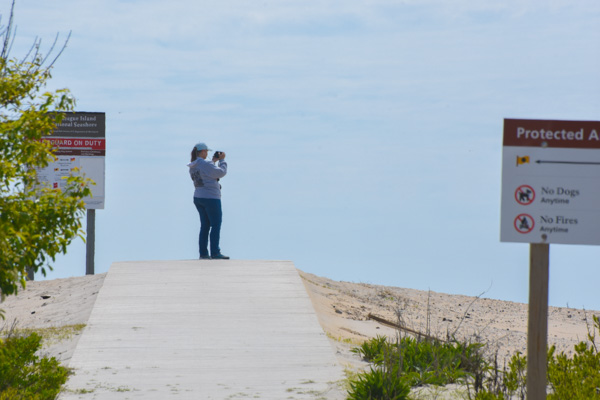
...so we walked to the beach.
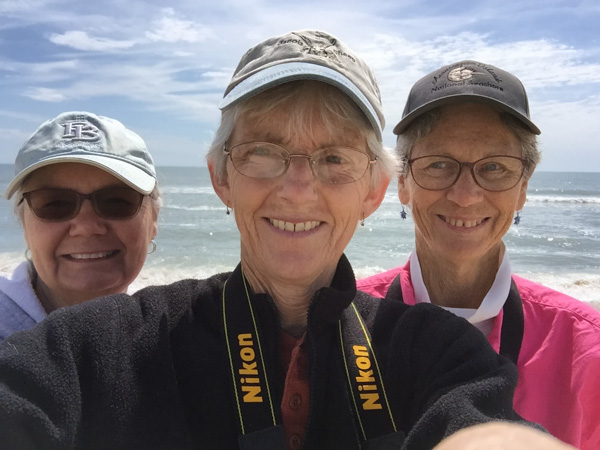
We had made it to the Atlantic.
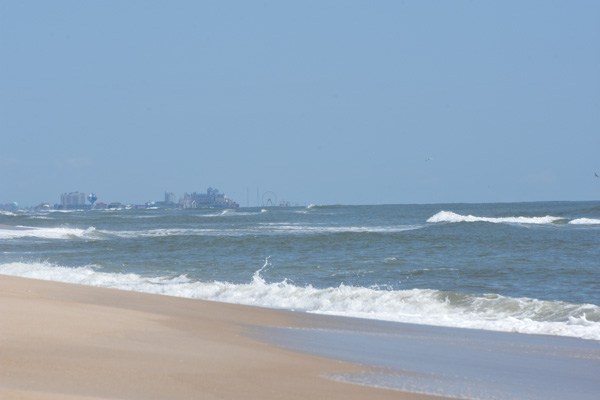
That is Ocean City, about 10 miles north. Can you see the ferris wheel and the amusement park in the middle of the photo? What a contrast when looking from the National Seashore.

The barrier islands are "among the most dynamic landforms on earth". There is constant change. Assateague Island is moving west, at an accelerated rate after jetties were constructed near Ocean City in the 1930s. At one time Assateague Island was to be developed, and in the 1950s a 15-mile road was created on the Maryland side of the island. A hurricane in 1962 wiped out structures and covered the road, and legislation in 1965 created the National Seashore.
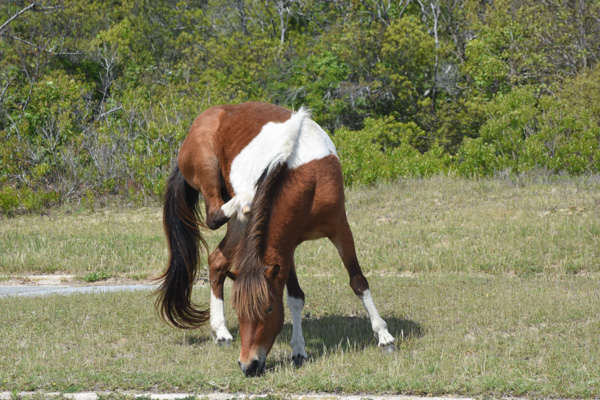
The ponies are most likely descendants of horses that were brought to the island 300 years ago by farmers who took advantage of the natural "corral" made of water. Farmers were required to pay taxes on their livestock and by turning them loose on the island, they could avoid the tax. I usually try to be scientifically accurate about what I write, but there is some artistic license here. The documentation from the Park Service says that genetically these are HORSES, not PONIES. The small stature is a result of years of adaptation to a diet of abundant, but nutrient-poor salt-marsh grasses.
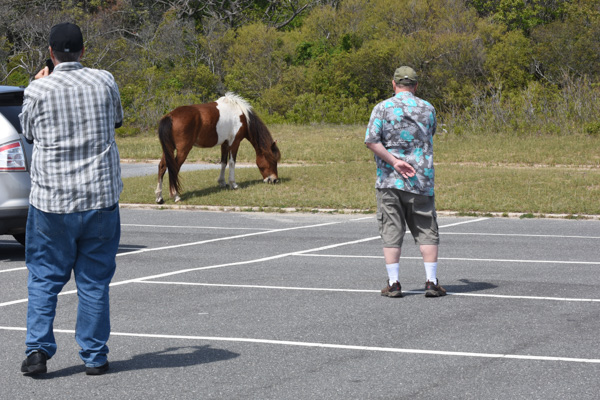
Sorry. I will continue to call them ponies while I'm talking about our visit. They are used to paparazzi. We were lucky to be visiting in the off-season and on a weekday. There were very few people around. It would have been a very different scene if the parking lots and roads were full.
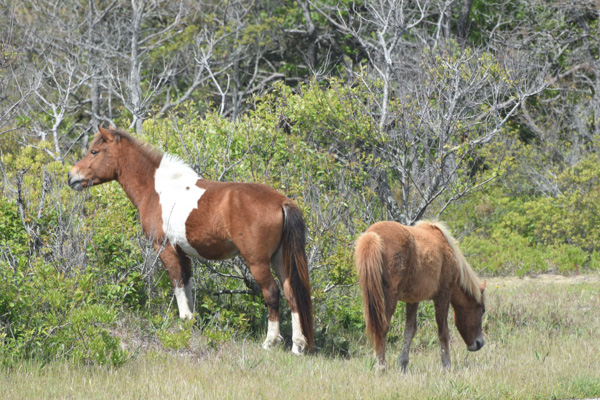
The ponies wandered off and we drove on to find more.
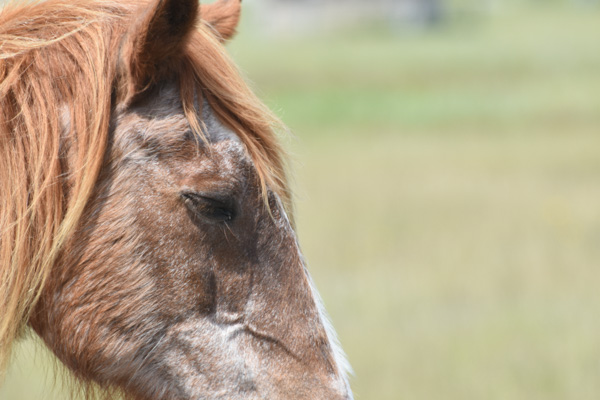
This looked like a very old pony at an empty campground. The Maryland ponies are managed as wildlife are. From the brochure, "While action may be taken to end the suffering of a gravely ill, seriously injured, or dying horse, no measure are taken to prolong the lives of Maryland's wild horses. As with other species of Assateague wildlife, horses that are sick or weak do not survive." The population is controlled using a non-hormonal, non-invasive vaccine, administered by a dart, to prevent pregnancy. With this method the birth rate has been lowered to fewer than ten foals each year which maintains the population at under 125 horses.
A fence that separates the Maryland and Virginia herds. The Virginia herd is privately owned and produces 60-90 foals each year. The foals are sold at auction after the annual swim from Assateague Island to Chincoteague Island and the proceeds go to veterinary care, the fire department, and various charities. There are week-long festivities around this event and you can see videos at this link.

There are three nature walk trails through the marsh, the forest, and the dunes. We started with the marsh trail.
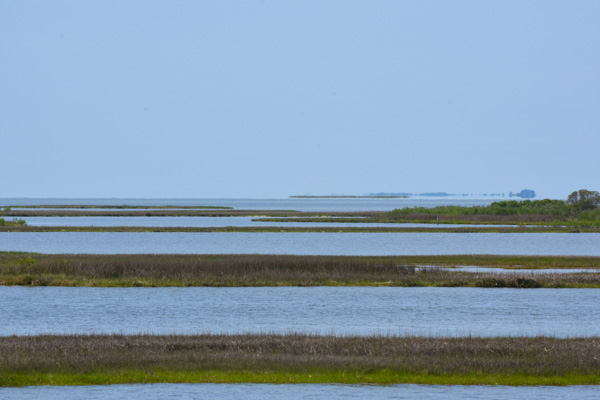
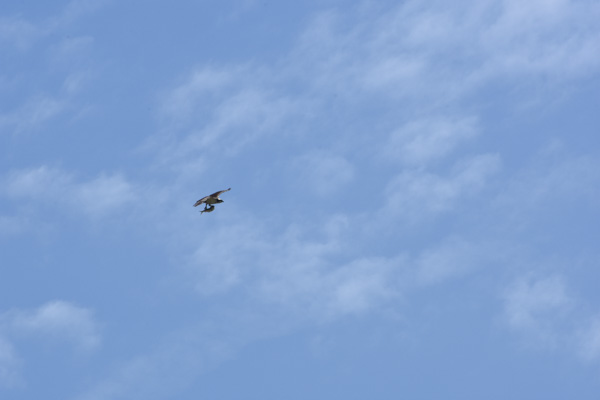
We spotted this osprey that had caught a fish.
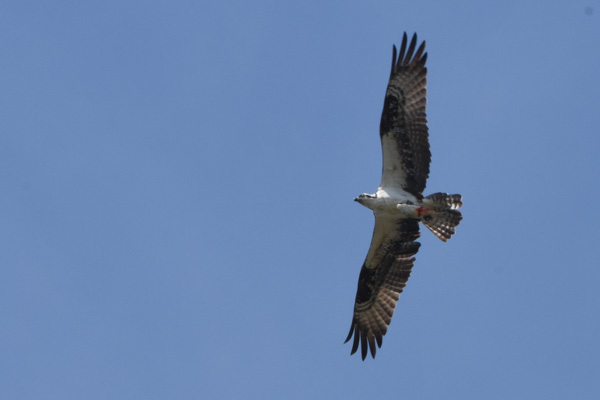
We watched for quite awhile while it circled, still carrying it's fish.
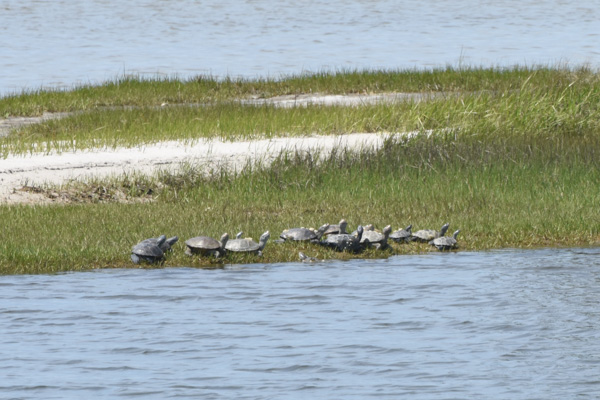
Diamondback terrapins.
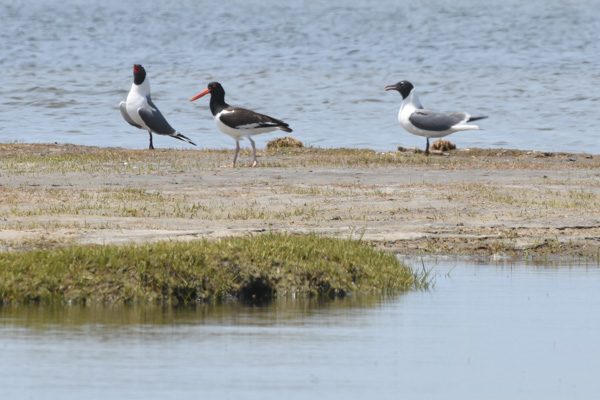
Two laughing gulls and an American oystercatcher...
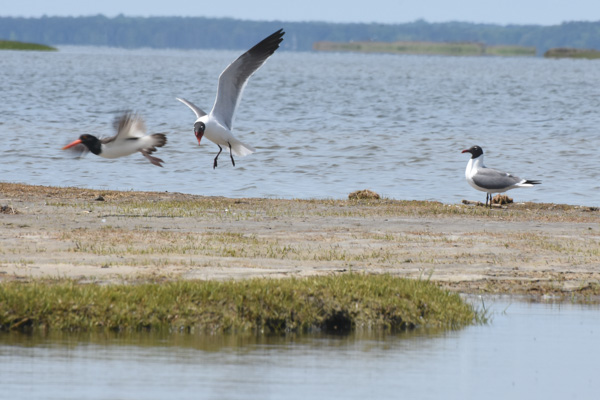
...who was not welcome.
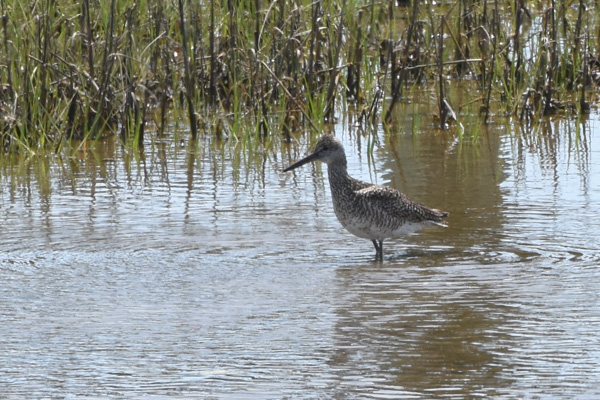
Short-billed dowitcher.
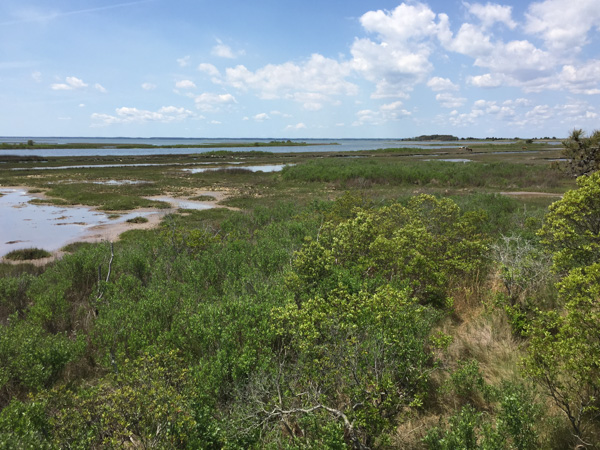
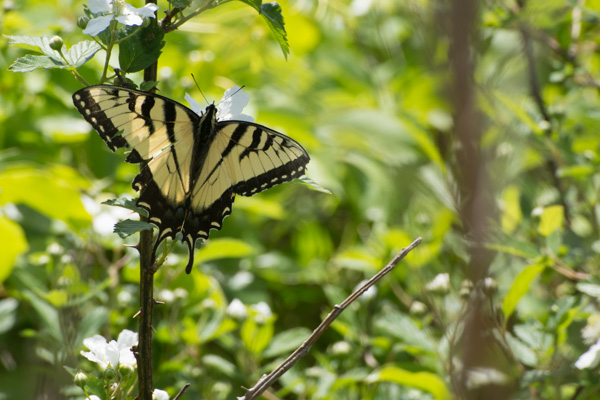
We drove down another road...
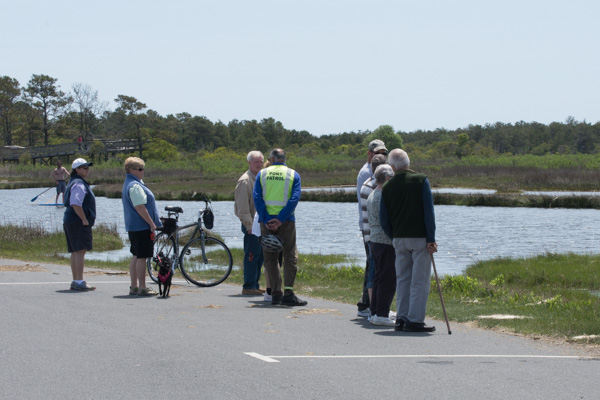
...where we saw a group of people gathered. From my Yellowstone experience (people stopping in the road when wildlife is spotted), I figured that that meant Ponies!
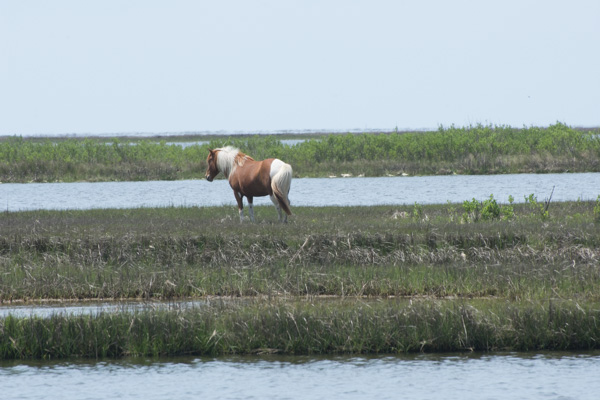
This group was a little more picturesque, being "in the wild" instead of "in the parking lot".
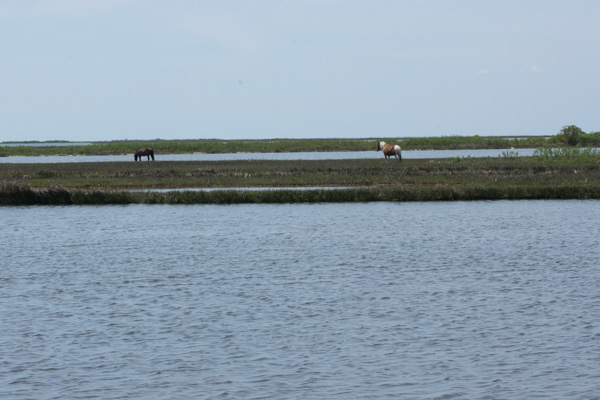
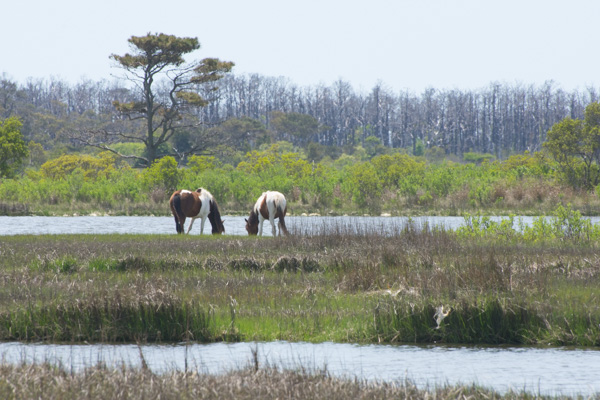
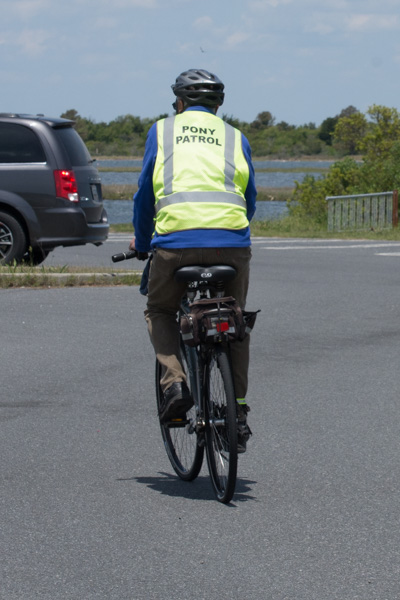
There was a Pony Patrol volunteer with that group of people answering questions and making sure that ponies aren't harassed.
We drove to the next trail--the forest nature trail.
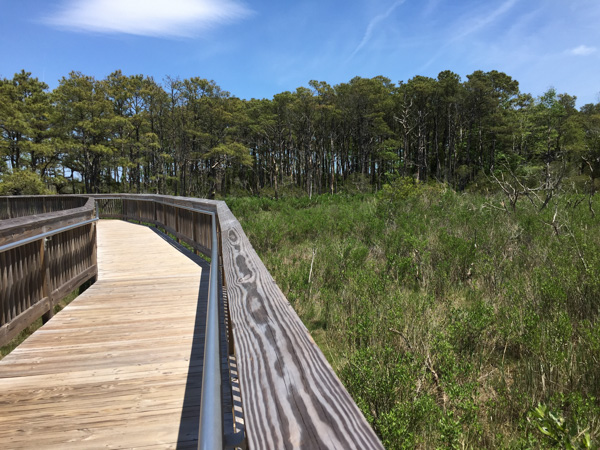
Loblolly pines are the dominate forest species.
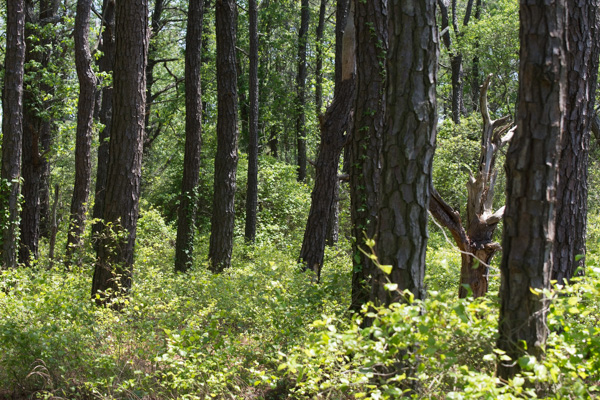
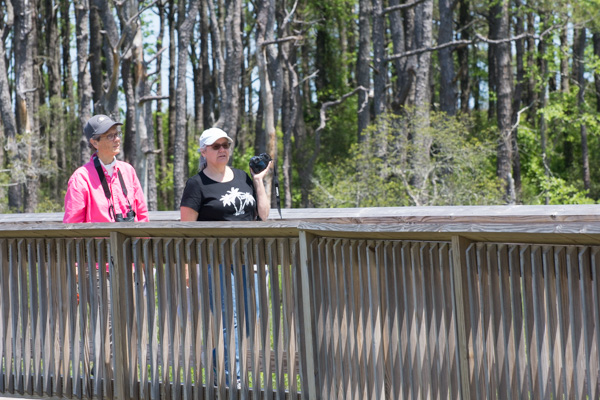
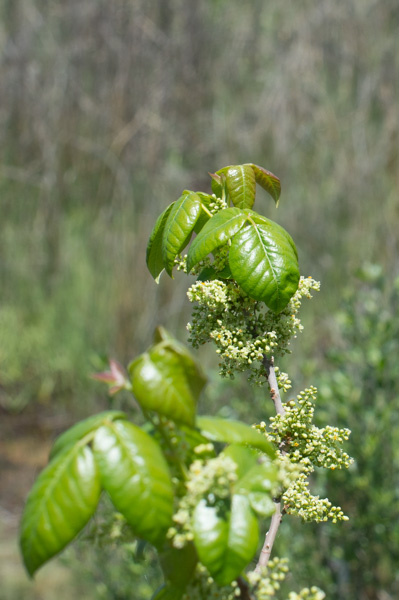
Poison ivy.
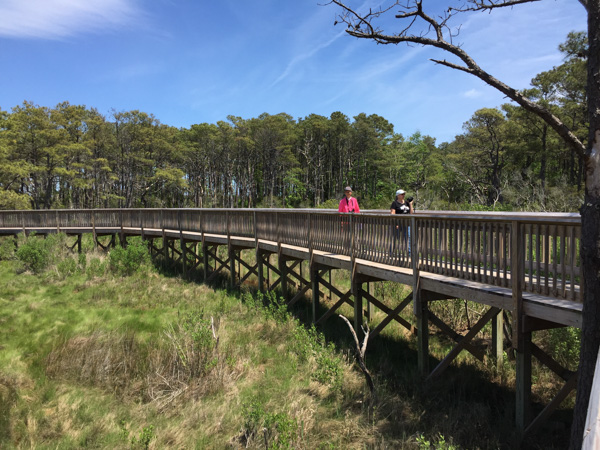
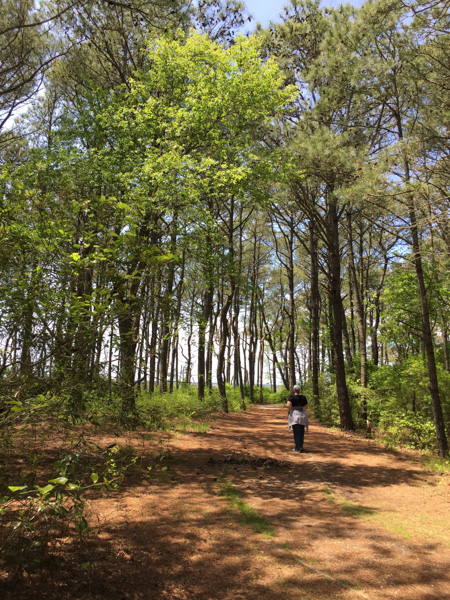
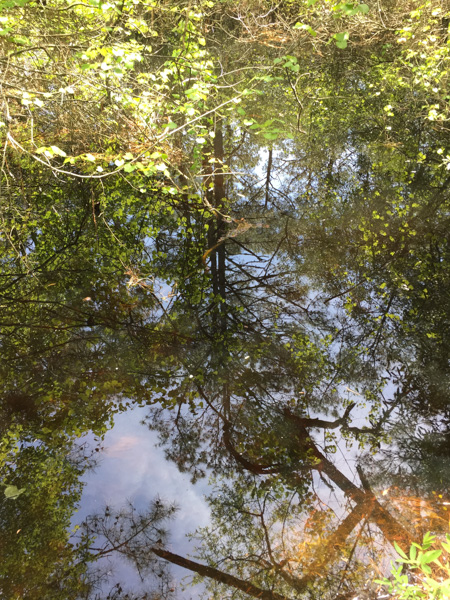
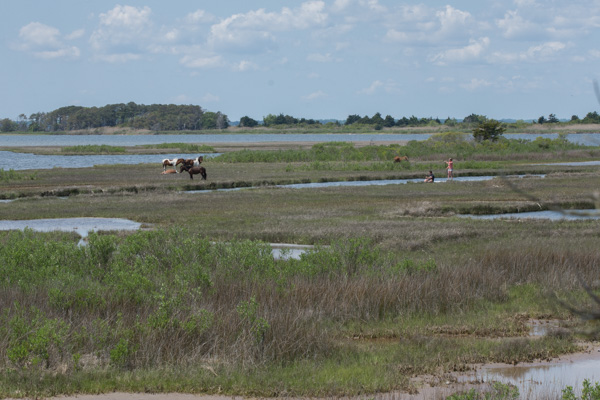
At the end of that trail we saw the same group of ponies, but from a different view. Notice the paddle-boarders in the marsh. What a great way to see the marsh and the ponies.
One more interesting pony fact: "The Assateague horses drink over twice the amount of water that domesticated horses will due to their salty food supply. All that drinking combined with a high salt diet contributes to their bloated appearance."
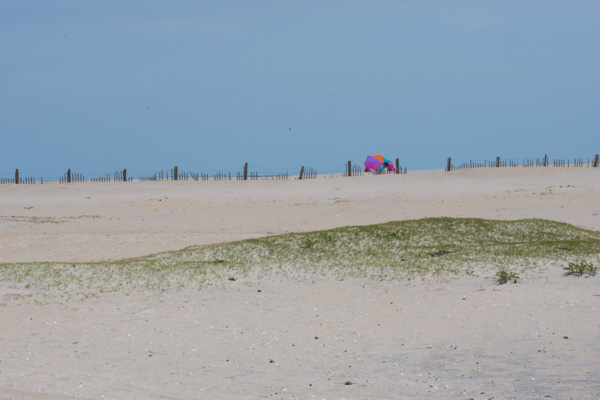
We drove to the Dune Nature Trail.

Chris needed some beach time so Kathleen and I walked the trail while Chris enjoyed the beach, albeit a bit cold and windy.
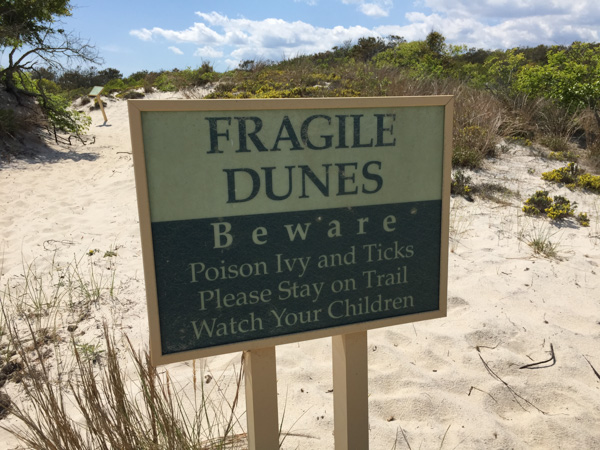
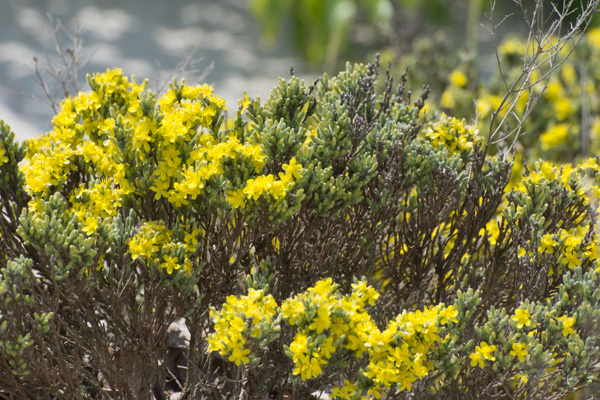
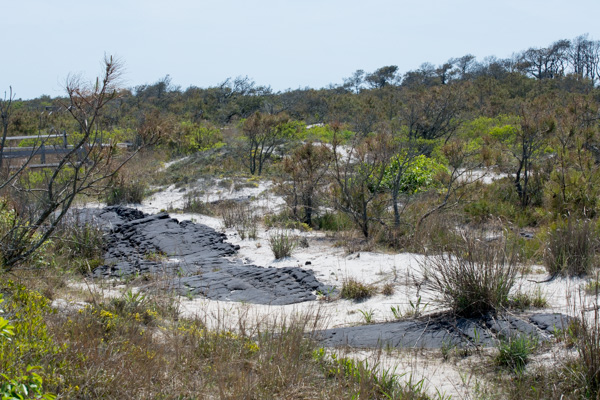
Remember the road that I said was built in the 1950s? Part of it is still visible.
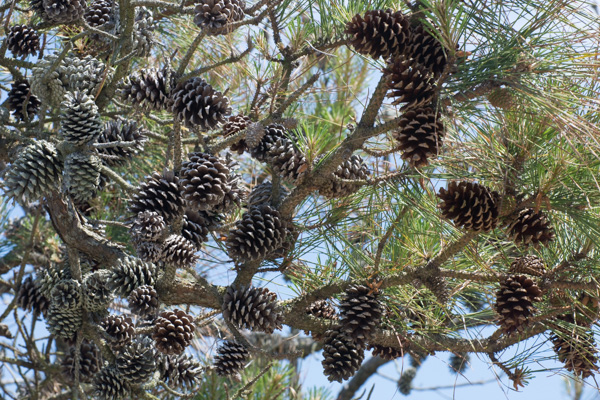
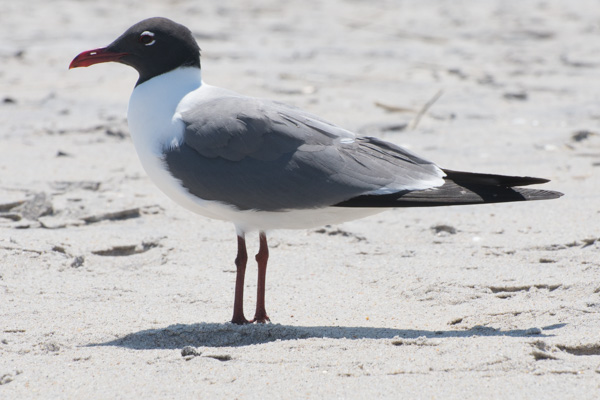
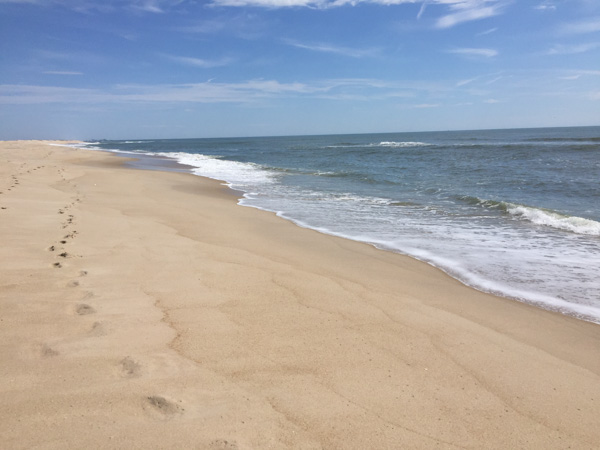
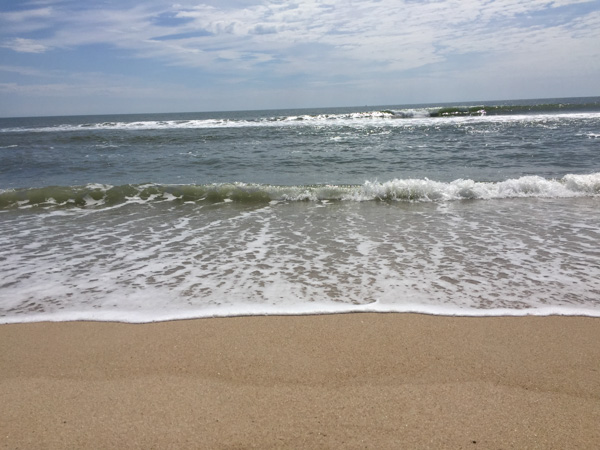
As we left the park we were faced with that age-old question.
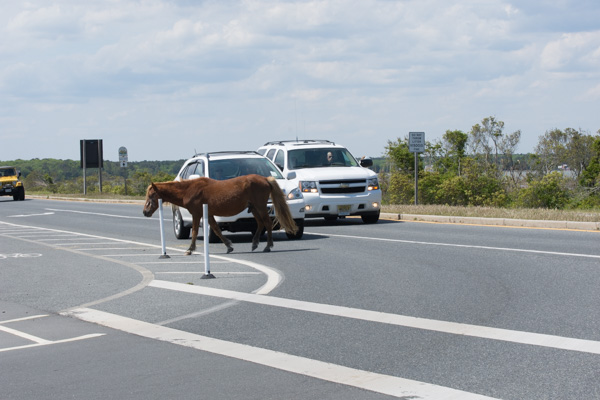
"Why does the pony cross the road?"
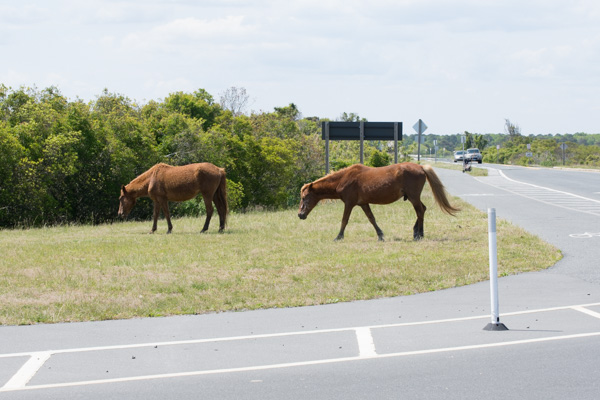
Because the grass is greener?
This was another full day (and a very full blog post) but there is more Maryland scenery. That will be another post.